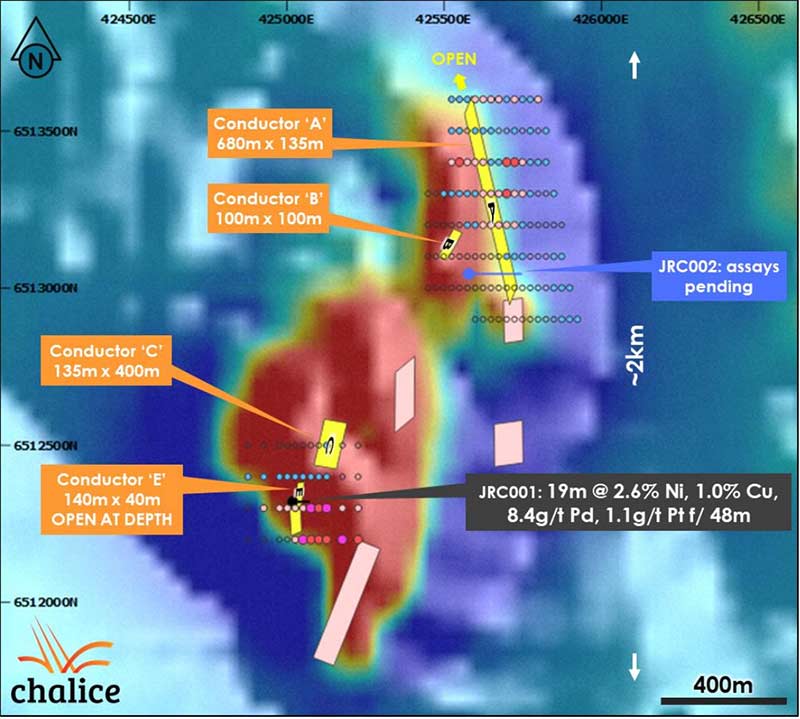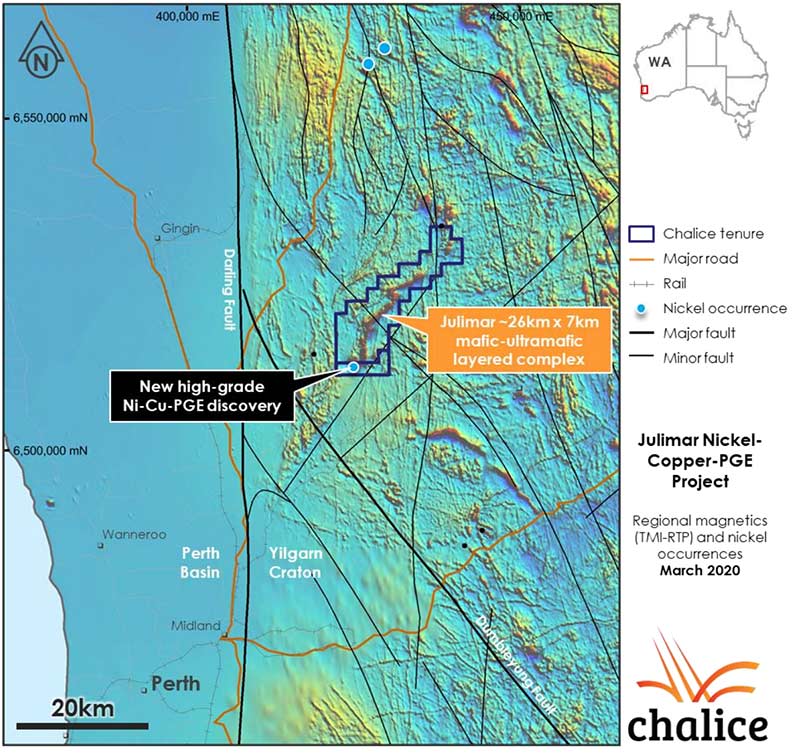Chalice’s Alex Dorsch on just ‘how rare’ the Julimar nickel discovery really is

Pic: Tyler Stableford / Stone via Getty Images
Earlier this week, explorer Chalice Gold Mines (ASX:CHN) unveiled a spectacular high-grade nickel-copper-palladium intercept at the greenfields Julimar project near Perth in WA. Initial comparisons are being made to Sirius Resources’ legendary Nova nickel discovery.
In 2012, cash strapped explorer Sirius unearthed the globally significant Nova nickel deposit in the Fraser Range of WA, sending an otherwise depressed market into a frenzy. Within two months the Sirius share price was up 4000 per cent, from 5c to over $2.50.
When the former penny stock was acquired by major miner Independence Group (ASX:IGO) in 2015 it was valued at $1.8bn, or $4.38 per share. Every explorer’s dream.
Like Nova, Julimar is located in a previously overlooked mineral province, in an area which has never before been drilled for nickel. It also comes at a time when global markets are looking sick.
But with ~$23m in the bank, Chalice is no cash strapped penny stock. Stockhead spoke with managing director Alex Dorsch about its plans for this potential company maker.
There have been comparisons made to the Nova nickel discovery. Are there early stage similarities or is it too soon to tell?
“It’s a very nice comparison to make,” Dorsch told Stockhead.
“There’s already been a couple of analyst reports released making that Nova comparison.
“What’s really significant for us is just how rare these types of drill results are. High-grade intercepts like this into new nickel projects do not come around very often.
“From a technical standpoint it has similar-looking magnetic features and comparable – but not identical – mineralogy. We also have spectacular palladium grades, [which Nova didn’t have].
“We don’t know anything beyond that just yet.”
A second hole at another target called Conductor A looks to be unsuccessful. Does the immediate success you had at Conductor E point to the ‘luck’ involved in greenfields exploration, or was there something about this target you particularly liked?

“We drilled Conductor E first because 1); it was modelled as the strongest conductor and 2); it was a ‘discrete’ shape [distinct] and didn’t look like it ‘fit’ into the magnetic signature,” Dorsch says.
“We liked Conductor A because it had size, but we were always concerned that it was on the ‘margin’ of the magnetic feature and could be a conductive unit in the surrounding rocks.”
[Note: Moving-Loop Electromagnetic surveying (MLEM) maps sub-surface changes in electrical conductivity and is a useful tool for finding nickel sulphides. But it is far from perfect, because nickel sulphides aren’t the only thing in the ground that that are conductive.]
Is that what you’re talking about when you mention the difficulty drilling magmatic sulphides? That there’s lots of other stuff in the ground that’s conductive as well?
“Yes, exactly. If you look at the case histories of discoveries like Nova and Voisey’s Bay [in Canada] they typically drilled lots of holes trying to find it.
“EM is not a perfect technique – it’s a great technique, but not perfect.”
So, the immediate plan now is to punch a couple of holes into the two remaining conductors, and then follow-up that intersection at Conductor E?
“Yes – we will be doing ‘step out’ drilling at Conductor E [expanding the mineralisation zone] based on some downhole EM (DHEM) which is already underway.
“That massive sulphide zone is so conductive it is interfering with the ground EM, so whatever is going on at depth is unknown at the moment.
“That DHEM will give us targets for follow-up drilling.”
You have also tied up an extra 2300sqkm of ground around Julimar. Are there other targets you have your eye on?
“We have gone and pegged the key magnetic features, but it’s also about protecting ourselves commercially.
“To be honest, our best-looking undrilled target at the moment is elsewhere on our existing granted tenure.
“Conductor E – where we drilled our first hole – ranks as the #1 but there’s a very similar, potential feeder pipe-looking feature about 10km to the northeast.
“But it is within the Julimar State Forest, so we have to go through the process of getting ministerial approval to get access.
Does this target have a name?
“No, not yet. We need access approvals to get on the ground, but we may do an airborne electromagnetic survey [over the target] as a way to keep the ball rolling.
“Its granted tenure so we can fly over it; we just can’t get on the ground yet.”
Julimar is not one of your key projects right now. Is that set to change?
“It is. Our gold exploration at the Pyramid Hill project in Victoria is still going strong so we are going to run both programs in parallel.
“The beauty of Julimar being an hour out of [Perth] is that the guys can drill during the day and sleep in their own beds at night, which is unheard of for most exploration projects.
“We will have one rig running at Julimar for the time being, but we are looking for a second rig now.”

Related Topics
UNLOCK INSIGHTS
Discover the untold stories of emerging ASX stocks.
Daily news and expert analysis, it's free to subscribe.
By proceeding, you confirm you understand that we handle personal information in accordance with our Privacy Policy.








